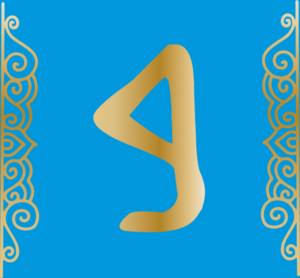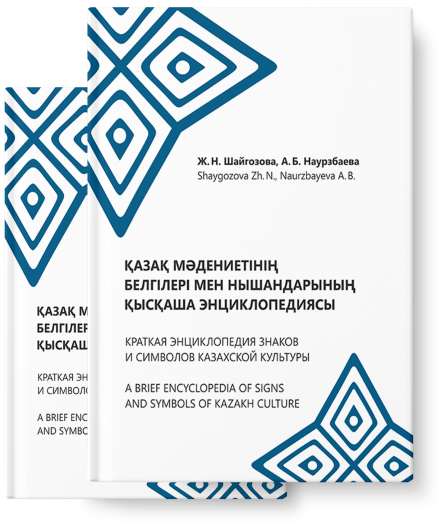
A short encyclopedia of
Signs and symbols of
Kazakh culture

The nine in the world culture manifests itself in various hypostases: in ancient Greece – it is nine muses – the patrons of art and science, the ancient German sacrifices of nine animals, there is a belief among the Mayan Indians about the nine underground worlds, etc. This number was considered by most cultures as a symbol of knowledge, wisdom, destiny and education.
Among the Kazakhs, the number “nine” rightly refers to rituals and is found in nine items of the bride’s dowry (9 blankets, 9 types of dishes, etc.). Among the Kazakhs and Mongols, the number nine was also considered sacred, and the khan’s gift consisted of nine items (nine horses); this was also the number of the fine. The reward for the baiga was also nine. Thus, the prize for the bearer of the horse consisted of a camel, an eagle, a horse, a cow, a foal, a sheep, a goat, a carpet, a fur coat, or other nine values in various combinations [2, p.75].
Nine courses were prepared for the Uzbek wedding. In the past, some Turkic peoples had the custom of buying their own child to protect it from harm and giving 9 items in return. Such a child was called Togyzak or Satybaldy.
Moreover, the names of the Turkic khans were accompanied by nine epithets.
Among the Turks the number “nine” was a kind of orally mentioned limit of counting. This is proved by the ancient Kazakh game Togyz Kumalak, which uses a number of mathematical actions: Addition, subtraction, multiplication and division, with the aim of achieving a “harmonious position of the stones, which is the main principle and determines the ability of the player” [8].

